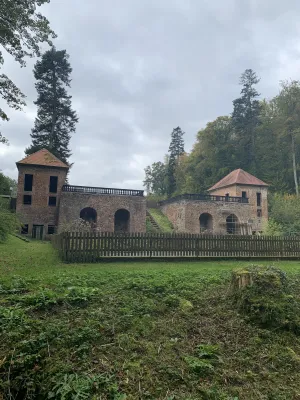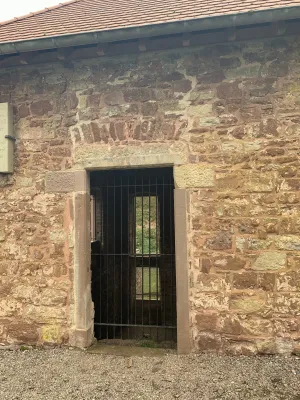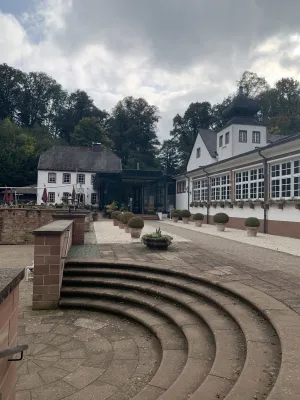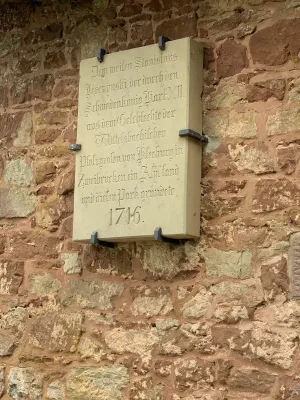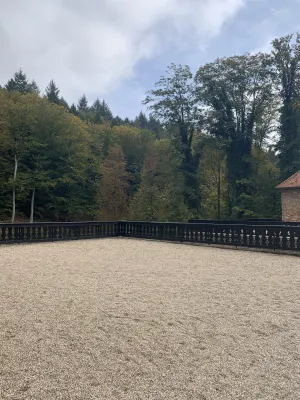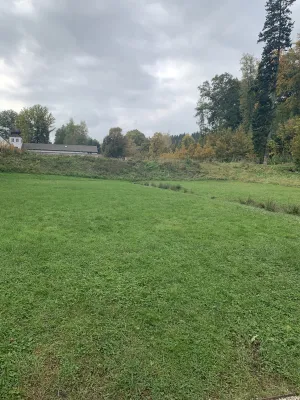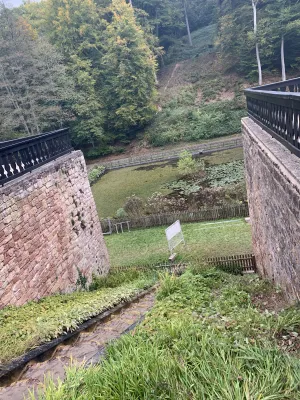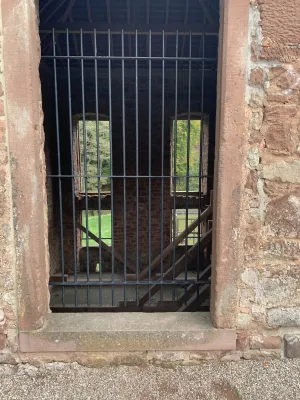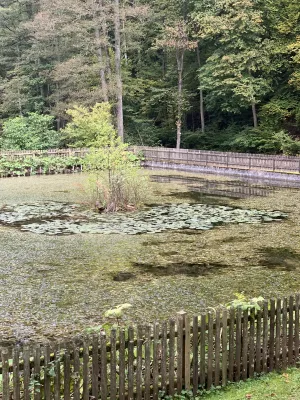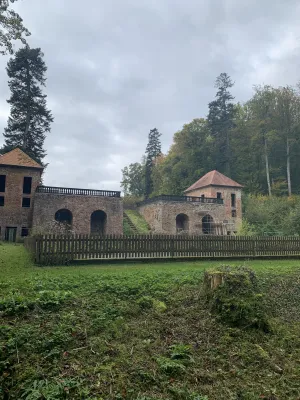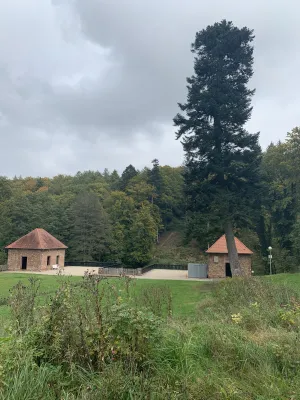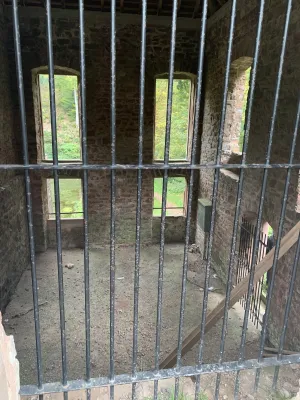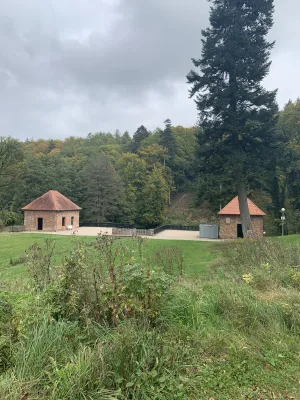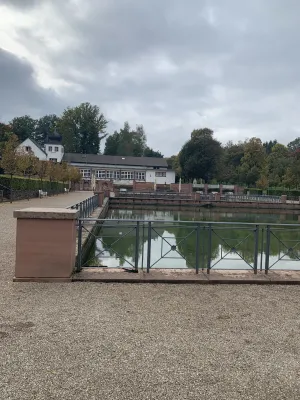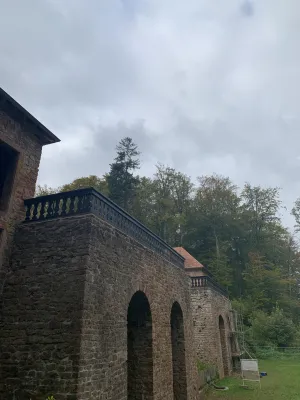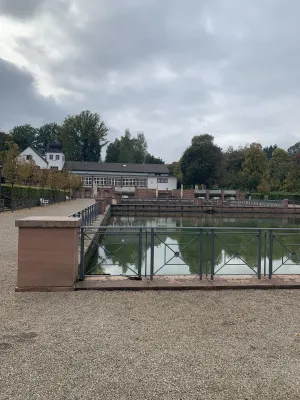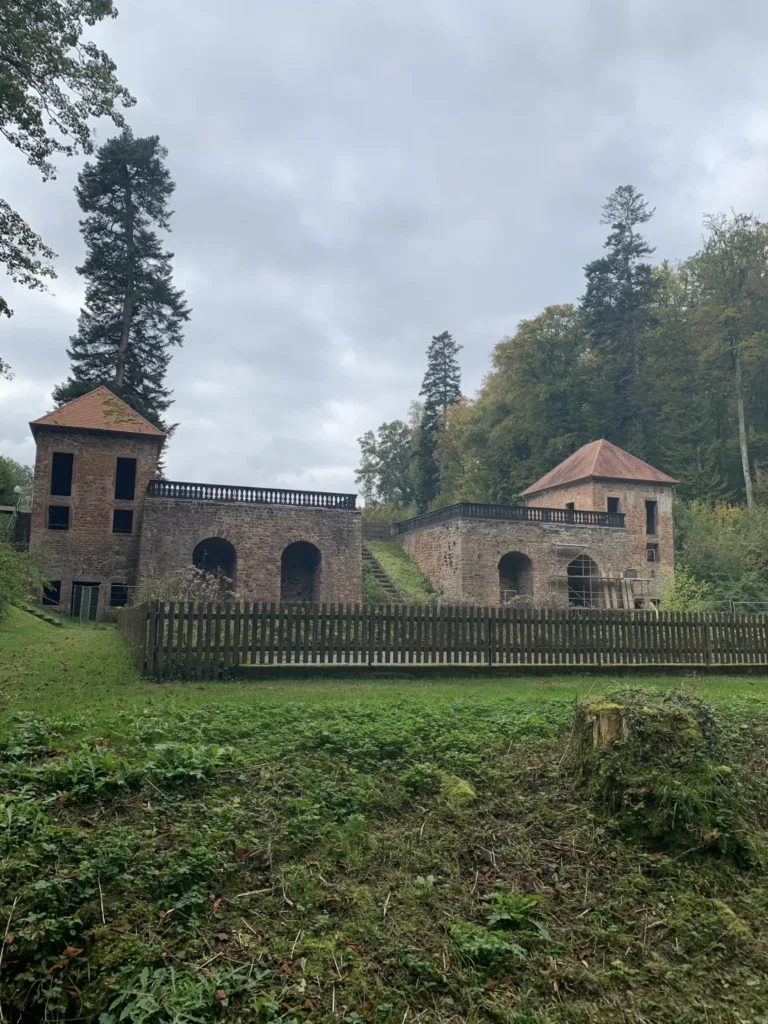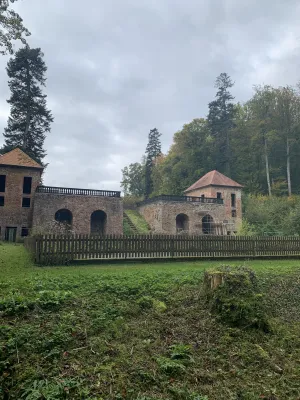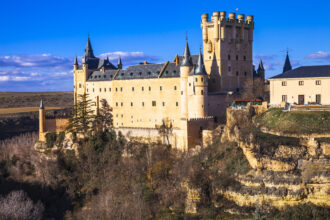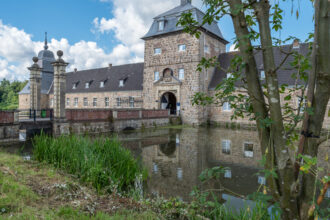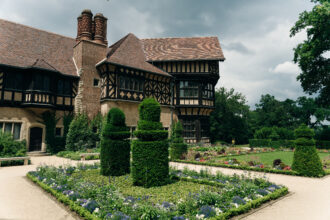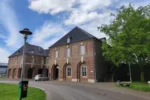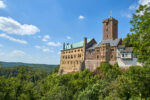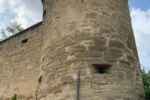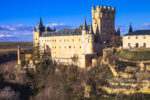The romantic Landschloss Fasanerie hotel is located in the heart of the Fasanerie recreational area. Not far from there, the remains of the Tschifflick pleasure palace of the late Polish king and Grand Duke of Lithuania Stanislaus I Leszczynski can still be seen today. He was granted asylum in Zweibrücken in 1714 by Charles XII, King of Sweden and Duke of Palatinate-Zweibrücken. The deposed Polish king arrived in Zweibrücken on July 4, 1714, together with his wife, his two daughters, and his court to Zweibrücken on July 4, 1714, where he initially resided under the alias Count Kronstein in a prestigious building in the upper town until his country castle, designed by Swedish architect Jonas Erikson Sundahl, was completed in 1716 in the middle of the forest with impressive gardens and water features. The Polish king christened this small pleasure palace with the Turkish name Tschifflick, which means “country estate” and was a tribute to his time in exile in Turkey. Stanislaus’s older daughter Anna was particularly fond of the estate in the middle of the forest, where she would go for hours-long walks. One day, she met the shepherd boy Leander under an ancient beech tree. The two fell madly in love and met every day under the beech tree. This came to the attention of her father, who was furious and forbade Anna from having any contact with the shepherd boy, who was not of her social standing. Anna fled the country castle despite the storm and sought shelter under the beech tree. But as fate would have it, she was killed by a falling branch right there. When her lover learned of her death, he took his own life. Since then, an oak tree has grown next to the beech tree. The two trunks appear to have almost merged together and can still be seen today. Such is the legend of Zweibrücken’s tragic lovers, which has never been proven. But what is certain is that Stanislaus’s older daughter Anna did indeed die unexpectedly in Zweibrücken on June 20, 1717, and was subsequently buried in the monastery church of Gräfinthal, a favorite place of the family. The Polish king had to vacate the country castle as early as 1719, as Charles XII died on December 11 and the Palatinate-Zweibrücken, ravaged by war and poverty, was unwilling and unable to bear the immense costs of maintaining the court of the Polish king in exile. Stanislaus then sought refuge in Wissembourg in Alsace and in Landau. His younger daughter Maria married the French King Louis XV in 1725, as a result of which Stanislaus received the Duchy of Liechtenstein. The country castle was completely finished in 1728 under Duke Gustav Samuel Leopold, but fell into disrepair due to lack of maintenance. The country castle and park were revived on the orders of Duke Christian IV, who had a pheasantry built in the garden area between 1757 and 1769, giving rise to its current name, “Fasanerie” (pheasantry). After that, the country castle fell into disrepair again, and in 1887, the city of Zweibrücken finally bought the entire area and revitalized it with a restaurant, which is now a hotel. In the 1970s, the wild rose garden opposite the current hotel was laid out. At the same time, the ruins of the 12th-century tower castle were found and subsequently excavated. Today, the Tschifflick ruins, together with the hotel and the picturesque wild rose garden, are one of the tourist hotspots of the Palatinate rose town of Zweibrücken, which I also visited and immersed myself in a bygone era.
